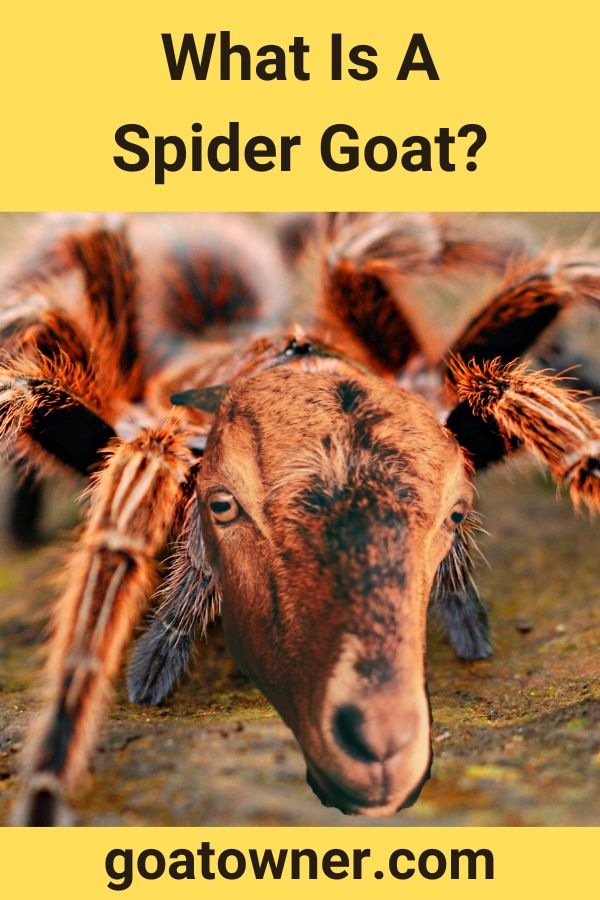There are seemingly no bounds to what human science can accomplish, and that includes splicing the genes of virtually any two animals, no matter how different.
If you’ve read about the term spider goat in the news, you may be wondering if it is a superhero companion—but we’re here to tell you it’s not quite as exciting as that.
So, what is a spider goat?
Spider goats are goats that have had spider DNA spliced into their genes. The goats are genetically modified in order to produce spider silk, one of the strongest substances we know of. A protein is extracted from their milk, out of which spider silk is spun.
So, a spider goat is neither a superhero companion or a goat with eight legs.
It’s a genetically modified goat, the result of many years of study and research into genetic science to produce a creature that can be harvested for a very strong material.
Let’s look further into this.
How is a spider goat created?
The first thing you’re probably wondering is how you can mix goat and spider DNA in a way that actually achieves anything.
After all, goats and spiders certainly cannot mate.
But genetic science is advancing more and more every year, and the things we can do are becoming more and more intricate.
Spider goats are created through genetic modification and artificial insemination.
The problem with farming spiders is that they do not get along well with one another and are often cannibalistic.
The original team of scientists which created spider goats first took an orb-weaver spider and extracted the gene which encodes their dragline silk.
This gene was then placed among the DNA of a collection of goat cells responsible for producing milk in the udders.
This formed a genetic circuit. DNA effectively contains the instructions cells need to make every part of the body.
So, by inserting the spider DNA, the goat udders get new instructions on how to produce silk.
This genetic circuit is then inserted into a fertilized goat egg, which is then implanted in the mother goat.
The resulting goat then produces spider silk from her udders, as does the goat that was originally impregnated.
So, it’s a lot of highly sophisticated genetic tinkering.
The project has had robust funding because the properties of spider silk are highly desirable in a lot of ways—it is even stronger than Kevlar.
Without this kind of funding, the project would not have been possible.
So, what are these goats used for?
What are spider goats used for?
It is still mostly true that spider goats are in an experimental stage, and their concrete applications are yet to be widely seen.
Though getting goats to produce spider silk has many potential applications, we are not really able to do it on a large enough scale to really get a great deal of use out of it.
That said, there are plenty of potential ways spider goats could be used.
Broadly speaking, it just allows researchers to produce large quantities of spider silk.
Spiders, naturally, do not produce a great deal, and you obviously can’t really farm it from them anyway.
They use the silk to catch themselves when they fall.
So, having goats produce it from their udders means we could extract a lot more of it and a lot more easily.
The silk itself could be used in any number of sectors.
It could be used to make body armor, building materials, parts for vehicles like helicopter blades—anything where you need a very strong material.
The U.S. Navy has suggested using the spider silk as a weapon to sabotage vessels by getting their propellers tangled up.
Again, though, this is all still slightly theoretical.
It would need to be produced on a much larger scale than it presently is to get any large amount of silk out of it.
But it’s not just the silk that they produce.
Is spider goat milk drinkable?
Yes, it is, surprisingly.
One might expect the milk to be unpalatable due to the presence of the spider silk, but in fact, this has no real impact on the taste or the nutritional quality of the milk.
Spider goat milk does not actually contain spun spider silk. Rather, it contains a protein which can be extracted and then spun into silk by machines.
Ultimately, though, if the milk remains drinkable after the silk proteins have been extracted, then the goats could be even more profitable than just silk producing.
But we can understand if you’re a bit put off by the idea!
How many spider goats exist?
There has been little news on the development of spider goat farming for a while.
Many news stories were run on the subject in 2012, at which time there were known to be around 30 spider goats at a university-owned farm.
Today, that number may be more or less—it’s difficult to say.
In any case, the level of spider goat farming is still minimal, and there are not large numbers of them.
Spider goats are certainly an incredibly intriguing modern advance, with a lot of applications for their produce.
The process is still rather complex and esoteric, and not available to a wide range of goat farmers—nonetheless, the very fact that we can do such a thing suggests many possibilities in the future.
We may be able to genetically modify all sorts of animals for all sorts of reasons.

